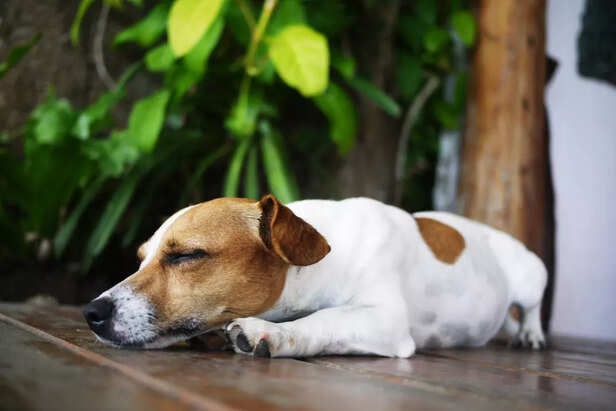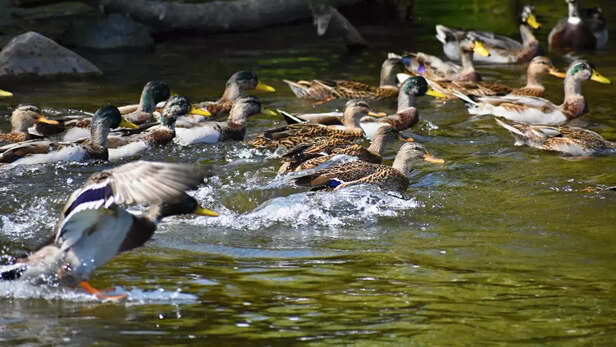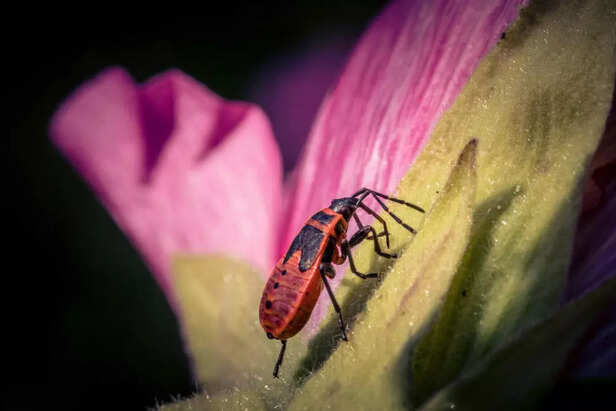Inside the Minds of Pets: Do They Dream Like Humans?
Shibam Mukherjee | May 08, 2025, 10:41 IST
Pet Dreams Revealed
( Image credit : Freepik )
Dive into the fascinating world of animal dreams with "Inside the Minds of Pets: Do They Dream Like Humans?" This article explores scientific insights into pet sleep habits, including REM sleep in dogs, cats, birds, and even octopuses. Discover how dreaming strengthens the bond between humans and animals, revealing their emotional depth and cognitive processes.
Have you ever caught your dog softly barking or your cat twitching their paws in their sleep? It’s a heartwarming sight that raises an intriguing question: Do pets dream like humans? The answer isn’t just fascinating—it’s a gateway to understanding the inner lives of our beloved companions.
What Science Says About
![Science about pet dreams]()
Scientists have studied animal sleep for decades, and the evidence is clear: many animals experience dreams. Mammals like dogs, cats, and even rodents enter Rapid Eye Movement (REM) sleep, a stage closely linked to dreaming in humans. During REM, brain activity mirrors patterns observed during wakefulness, suggesting that animals might be replaying their waking experiences in their dreams.
For instance, experiments with rats revealed that their brains replay maze navigation during sleep. Similarly, dogs might dream about chasing balls, playing with their owners, or barking at squirrels. This replay process likely helps consolidate memories, a function that is just as important for pets as it is for us.
![curious case of cats]()
Cats, with their luxurious sleeping habits, offer fascinating insights into animal dreams. Spending up to 16 hours a day asleep, cats frequently enter REM sleep. During this stage, you might notice their whiskers twitch, tails flick, or paws move as if they’re chasing something unseen. Experts believe cats often dream about hunting or playing, reflecting their predatory instincts.
Kittens, in particular, exhibit lively REM sleep, likely because their young brains are processing new experiences at a rapid pace. Watching a kitten "hunt" in its dreams isn’t just adorable—it’s a sign of healthy cognitive development.
![what about non mammal's?]()
Dreaming isn’t exclusive to mammals. Birds also experience REM sleep, with zebra finches providing a particularly compelling example. Studies suggest these birds rehearse their songs during sleep, using dreams as a practice ground for their vocal skills. This discovery highlights how dreaming might aid learning across species.
Even octopuses, known for their intelligence, exhibit sleep behaviors that resemble REM. Observing an octopus change colors while resting hints at the possibility of dream-like activity, perhaps involving memories of their underwater adventures.
Dreaming serves similar purposes for animals as it does for humans. It may help process memories, rehearse survival skills, or simply provide mental relaxation. When your dog "runs" in its sleep, it might be reliving a joyful chase at the park or rehearsing instincts ingrained over generations.
For pets, dreams often reflect their bond with humans. A dog dreaming about fetch or a cat dreaming about cuddles showcases the depth of their connection with us. These shared experiences highlight the emotional richness of their lives and their capacity for joy and attachment.
The Emotional Connection
Knowing that pets dream strengthens the bond we share with them. When you watch your dog’s paws twitch or hear your cat’s soft meows during sleep, it’s a reminder that their inner world is as vivid and emotional as ours. Dreams provide a glimpse into their thoughts and feelings, deepening our empathy and connection.
Dreams also reveal how pets process their emotions. Like humans, they might relive moments of joy, excitement, or even stress. If a pet shows signs of distress while sleeping, it could point to unresolved anxieties, offering a valuable cue for attentive owners.
Understanding pet dreams helps us better care for them. Observing their sleep patterns can indicate overall health. Disrupted or irregular sleep might signal underlying issues, prompting timely interventions. By providing a stable, secure environment, we can support their well-being and ensure they enjoy restful, restorative sleep.
Animals, like humans, cycle through different sleep stages, including REM and non-REM sleep. Non-REM sleep focuses on physical restoration, while REM sleep is associated with dreaming and memory consolidation. Dogs, for instance, experience multiple short REM cycles during a nap, while cats might have fewer but longer cycles.
Interestingly, smaller animals like rodents have faster sleep cycles, leading to more frequent but shorter dreams. Larger mammals, such as horses, may experience fewer REM periods but longer dream sequences. These variations reflect the diverse ways animals process their experiences during sleep.
How Environment Influences Pet Dreams
![Environment and pets]()
A pet’s sleeping environment plays a crucial role in their dream quality. Pets that feel safe and secure are more likely to enjoy uninterrupted REM sleep, which is essential for dreaming. Creating a comfortable, quiet space for your pet to rest can improve their overall well-being.
Stress, on the other hand, disrupts sleep patterns. Pets exposed to loud noises, inconsistent routines, or negative interactions may struggle to achieve deep sleep. This can impact their mental and physical health. By fostering a peaceful environment, you ensure your pet’s dreams remain a source of joy and restoration.
![macro-shot-european-..._imresizer]()
While the idea of insect dreams may sound far-fetched, some studies suggest it’s not entirely impossible. Bees, for example, display sleep-like states where they appear to practice their "waggle dances"—a behavior used to communicate with the hive. Could this be a form of dreaming? While speculative, it opens fascinating avenues for further research.
Ethical Reflections on Animal Dreams
Understanding that animals dream raises important ethical considerations. If animals experience emotions and memories vividly enough to replay them in their sleep, it emphasizes the need for compassionate care. Respecting their mental and emotional well-being becomes even more vital.
The next time you see your pet twitching, wagging their tail, or softly growling in their sleep, take a moment to appreciate the wonders of their inner world. Whether they’re chasing imaginary squirrels, perfecting a melody, or reliving a happy memory, their dreams remind us of the profound connection we share. By supporting their need for quality sleep and respecting the depth of their experiences, we not only deepen our bond but also celebrate the incredible complexity of their minds.
Discover expert advice and the latest tips on pet care, training, health, and more. Stay updated with all things pets at Times Pets!
Frequently Asked questions (FAQs)
What Science Says About Pet Dreams

Science about pet dreams
( Image credit : Freepik )
Scientists have studied animal sleep for decades, and the evidence is clear: many animals experience dreams. Mammals like dogs, cats, and even rodents enter Rapid Eye Movement (REM) sleep, a stage closely linked to dreaming in humans. During REM, brain activity mirrors patterns observed during wakefulness, suggesting that animals might be replaying their waking experiences in their dreams.
For instance, experiments with rats revealed that their brains replay maze navigation during sleep. Similarly, dogs might dream about chasing balls, playing with their owners, or barking at squirrels. This replay process likely helps consolidate memories, a function that is just as important for pets as it is for us.
The Curious Case of Cats

curious case of cats
( Image credit : Freepik )
Cats, with their luxurious sleeping habits, offer fascinating insights into animal dreams. Spending up to 16 hours a day asleep, cats frequently enter REM sleep. During this stage, you might notice their whiskers twitch, tails flick, or paws move as if they’re chasing something unseen. Experts believe cats often dream about hunting or playing, reflecting their predatory instincts.
Kittens, in particular, exhibit lively REM sleep, likely because their young brains are processing new experiences at a rapid pace. Watching a kitten "hunt" in its dreams isn’t just adorable—it’s a sign of healthy cognitive development.
Birds, Fish, and Beyond: Do Non-Mammals Dream?

what about non mammal's?
( Image credit : Freepik )
Dreaming isn’t exclusive to mammals. Birds also experience REM sleep, with zebra finches providing a particularly compelling example. Studies suggest these birds rehearse their songs during sleep, using dreams as a practice ground for their vocal skills. This discovery highlights how dreaming might aid learning across species.
Even octopuses, known for their intelligence, exhibit sleep behaviors that resemble REM. Observing an octopus change colors while resting hints at the possibility of dream-like activity, perhaps involving memories of their underwater adventures.
Why Do Pets Dream?
For pets, dreams often reflect their bond with humans. A dog dreaming about fetch or a cat dreaming about cuddles showcases the depth of their connection with us. These shared experiences highlight the emotional richness of their lives and their capacity for joy and attachment.
The Emotional Connection
Dreams also reveal how pets process their emotions. Like humans, they might relive moments of joy, excitement, or even stress. If a pet shows signs of distress while sleeping, it could point to unresolved anxieties, offering a valuable cue for attentive owners.
What Can We Learn From Pet Dreams?
The Science of Sleep Stages
Interestingly, smaller animals like rodents have faster sleep cycles, leading to more frequent but shorter dreams. Larger mammals, such as horses, may experience fewer REM periods but longer dream sequences. These variations reflect the diverse ways animals process their experiences during sleep.
How Environment Influences Pet Dreams

Environment and pets
( Image credit : Freepik )
A pet’s sleeping environment plays a crucial role in their dream quality. Pets that feel safe and secure are more likely to enjoy uninterrupted REM sleep, which is essential for dreaming. Creating a comfortable, quiet space for your pet to rest can improve their overall well-being.
Stress, on the other hand, disrupts sleep patterns. Pets exposed to loud noises, inconsistent routines, or negative interactions may struggle to achieve deep sleep. This can impact their mental and physical health. By fostering a peaceful environment, you ensure your pet’s dreams remain a source of joy and restoration.
Beyond Mammals: Do Insects Dream?

macro-shot-european-..._imresizer
While the idea of insect dreams may sound far-fetched, some studies suggest it’s not entirely impossible. Bees, for example, display sleep-like states where they appear to practice their "waggle dances"—a behavior used to communicate with the hive. Could this be a form of dreaming? While speculative, it opens fascinating avenues for further research.
Ethical Reflections on Animal Dreams
The next time you see your pet twitching, wagging their tail, or softly growling in their sleep, take a moment to appreciate the wonders of their inner world. Whether they’re chasing imaginary squirrels, perfecting a melody, or reliving a happy memory, their dreams remind us of the profound connection we share. By supporting their need for quality sleep and respecting the depth of their experiences, we not only deepen our bond but also celebrate the incredible complexity of their minds.
Discover expert advice and the latest tips on pet care, training, health, and more. Stay updated with all things pets at Times Pets!
Frequently Asked questions (FAQs)
- Is it scientifically proven that dogs dream?
Yes, studies show that dogs experience REM sleep, a stage linked to dreaming in humans, suggesting that they do dream. - Do animals dream when they sleep?
Yes, many animals, including mammals and birds, enter REM sleep, indicating that they likely dream, similar to humans. - What do our pets dream about?
Pets likely dream about activities they experience during their waking hours, such as playing, chasing, or interacting with their owners.
